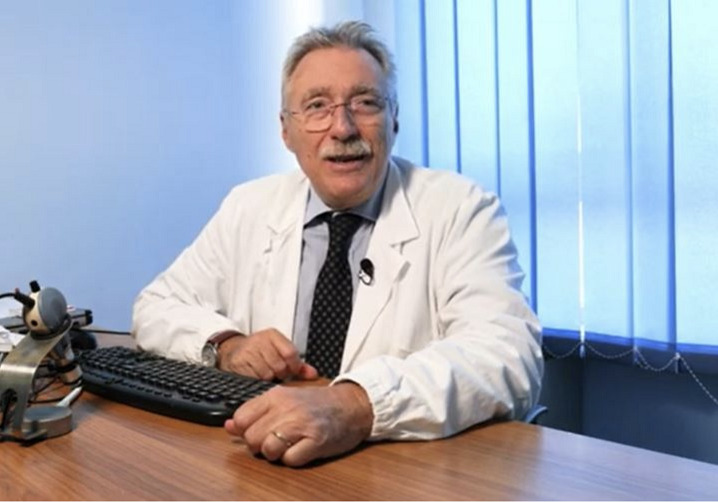As a girl growing up in northern Vermont, Jessica Hobart had asthma, frequent stomach aches and various allergies—“nothing too unusual,” she told SM Companion. But at 19 years old, while studying on a semester abroad program, she noticed unusual spots on her skin.
Once back home, Hobart visited a dermatologist, who took a skin biopsy. That summer, while working as a lifeguard and a swimming instructor, the dermatologist informed her she had urticaria pigmentosa, a skin manifestation of systemic mastocytosis (SM). SM is a rare disease caused by abnormal buildup of mast cells that leads to symptoms such as rashes, diarrhea, brain fog, and even life-threatening anaphylaxis.
The path to diagnosis
“’Otherwise you’re fine,’ [the doctor] said, and that was it,” Hobart said. “I heard nothing more from her. So I finished university with a lot of stomach aches and some allergy reactions, but I was still a lifeguard and a swimming teacher all the way through.”
But that doctor never told her what might trigger a severe allergic response—nor did he give her a supply of epinephrine (EpiPen injections) in case of anaphylaxis, which can cause death within minutes if left untreated.
“One of the things that now sets off my reactions is cold water,” Hobart said. “So I was really lucky in those three years…that I didn’t end up with anaphylaxis in some lake in Maine.”
In 1992, Hobart’s own health began to worsen. Her primary care doctor referred her to an allergist at Brigham and Women’s Hospital in Boston, Massachusetts. That allergist diagnosed her with indolent SM (ISM) after a bone marrow biopsy.
“‘That’s the kind you’d want to have,’ he told me, because it’s slow-growing, and it’s something you’ll learn to live with. It’s not something that’s likely to shorten your life,’” Hobart said.
From that day on, Hobart was determined to learn as much as possible about her disease, its various subtypes and its likely trajectory.
The weight of SM symptoms
In the late 1990s, soon after graduating from Harvard University in Cambridge, Massachusetts, with a master’s degree in public policy, Hobart became a co‑chair and trustee of The Mastocytosis Society, a nonprofit organization. In 2008, she moved with her husband and two sons to London, and six years later began volunteering for the UK Mastocytosis Support Group, which she now heads.
Yet because of her disease, Hobart, 55, eventually had to give up swimming altogether, and no longer takes baths because water triggers her symptoms.
“I haven’t had a bath in years,” she said, laughing. “I can take showers, but sadly, this is one of the things that a lot of patients can’t do. When you have too many mast cells like I do, you can be triggered by lots of different things which will create a kind of chemical cocktail that’s rushing around in your body.”
Those are precisely the kinds of challenges faced by people with SM, which occurs in roughly one in 10,000 people.
In early June, Blueprint Medicines, a pharmaceutical company based in Cambridge, MA, released results from the largest-ever European study looking at the effect this disease has had on patients and healthcare providers in seven countries: Austria, France, Germany, Italy, Spain, Switzerland and the UK.
The Perceptions Realities and Insights on Systemic Mastocytosis (PRISM) study—presented at the European Hematology Association’s EHA 2024 Conference in Madrid, Spain—found that:
- Patients with SM reported visiting an average 3.8 healthcare professionals before receiving a diagnosis, with 19% of patients reporting time to diagnosis of more than five years.
- SM patients take, on average, one medication daily to manage their symptoms, with the most bothersome symptoms related to skin, gastrointestinal, and allergy issues.
- 51% of patients reported having had at least one anaphylactic episode during the prior year, with the most common triggers being food (37%), stress (31%) and temperature changes (26%).
Additionally, 59% of patients said SM affected their ability to work, with 34% having to reduce their hours, 18% taking medical disability leave and 14% voluntarily quitting their jobs, and 8% taking early retirement.
Getting to the root of the disease
In June 2021, the U.S. Food & Drug Administration (FDA) approved Blueprint’s avapritinib (Ayvakit) to treat advanced systemic mastocytosis (AdvSM) in adult patients, as well as patients with aggressive systemic mastocytosis (ASM), systemic mastocytosis with an associated hematological neoplasm (SM-AHN), and mast cell leukemia (MCL). The FDA extended its approval for that same drug on May 22, 2023, to treat ISM as well.

Massimo Triggiani, a professor of internal medicine at Italy’s University of Salerno, was PRISM’s principal investigator. Dr. Triggiani chairs the European Competence Network on Mastocytosis, and is a past-president of the Italian Society of Allergy and Clinical Immunology.
He told SM Companion that the PRISM study involved more than 500 of Europe’s estimated 40,000 SM patients, and consisted of 119 questions about their diagnostic odyssey, quality of life, their use of medications, and their degree of satisfaction with currently available treatment strategies.
SM patients are generally on two different antihistamines, H2 antagonists, antileukotrienes, sodium cromoglycate, and epinephrine, Dr. Triggiani said.
“Despite this, about 50% of patients do not completely control their symptoms. But now, there are new, targeted treatments that hit the mutated molecule selectively in the mast cells.”
This, he explained, not only blocks the mediators once they’re released, “but also goes to the core of the problem and blocks activation of the mutated mast cells. These are called tyrosine kinase inhibitors, and now we can use them also in the treatment of patients with the indolent form of the disease.”

Cristián Pérez is Blueprint’s director of international patient advocacy. He said a real need exists for improved long-term treatment options, especially in patients with indolent SM.
“There’s an urgency to treat not only the symptoms, but also the root cause of mastocytosis,” said Pérez. “We found a lot of commonalities across countries, especially in terms of burden of the disease and the capacity to work.
There are many HCPs who manage this disease—an allergist, a gastroenterologist, an onco-hematologist—because of its heterogeneous nature, Pérez stated.
“That’s why it’s very complicated to get the proper diagnosis.”
The value of data in patients’ everyday lives
With regard to indolent SM, the study found that 43% of patients were limited in their ability to work, with a large subset having to reduce their hours (24.1%), take medical disability (16.9%), or voluntarily quit their job (10.1%), or take early retirement (6.3%). Even though respondents most frequently said their goal was to improve survival and quality of life, 43% reported feeling neutral or dissatisfied with their current treatment and management plan.
Hobart, who has indolent SM, said the limitations caused by the disease can have serious repercussions, especially as an employee or a parent.
“I’m really passionate about the need to communicate with doctors, family, employers, and schools. People need to have an understanding of how patients walk through the world and make adjustments for them,” she said.
“There isn’t a good study yet that says airborne triggers are a concern. And so if we don’t have that data, it’s very hard to say to your employer, ‘Hey, take that smelly sprayer out of the bathroom or I can’t come to work,’” she explained.
“It’s very difficult to say to a schoolteacher, ‘you need to not use whiteboard markers that have a strong scent, or my child will lose cognitive function in the classroom.’ That’s one area I think a study like this can really help.”


